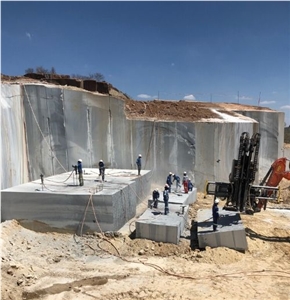Exploring Granite Quarries in South Africa: A Comprehensive Overview
Exploring Granite Quarries in South Africa: A Comprehensive Overview
Blog Article
Unveiling the Mysteries of Granite Quarrying: Where Stamina and Elegance Meet
The world of granite quarrying is a world where the raw toughness of nature assembles with human virtuosity to produce frameworks that stand the test of time with an air of sophistication. From the depths of quarries to the thorough sprucing up in workshops, the procedure of transforming granite into building marvels is an intricate dancing of practice and advancement. As we peer right into the midsts of this old craft, we start to uncover the concealed intricacies that shape the very significance of our constructed environment.
The Beginnings of Granite Quarrying
In the record of building background, the origins of granite quarrying are shrouded in a tapestry of ancient workmanship and geological wonders. Dating back to ancient Egypt and Mesopotamia, the extraction of granite from quarries marked the beginning of a journey that would at some point bring about the development of some of the globe's most renowned structures.
Granite quarrying's roots can be mapped to the skilled artisans who acknowledged the rock's resilience and visual allure. With a mix of primitive tools and large resolution, these very early quarry workers uncovered granite blocks that would certainly become the foundation of civilizations.
As worlds evolved, so did the techniques of quarrying granite. The Romans, renowned for their engineering prowess, established sophisticated techniques for removing granite to construct monoliths, temples, and roads that stood the test of time.
The heritage of these ancient quarrying methods proceeds to shape modern-day architecture, with granite continuing to be a symbol of stamina and sophistication in construction tasks around the globe. (granite quarries in south africa)
Devices of the Quarrying Profession
The development of granite quarrying methods from ancient people to modern times highlights the important duty played by the devices of the quarrying sell shaping the market's methods. In old times, quarrying tools were fundamental, typically containing chisels, hammers, and wedges made from materials like bronze or iron. These tools required considerable workforce and time to essence granite blocks from quarries.

In addition, the introduction of pneumatic devices and high-powered machinery has actually considerably decreased the physical labor needed in quarrying operations, improving employee safety and security and performance. As the quarrying sector remains to innovate, the devices of the profession continue to be at the center of driving progression and forming the future of granite extraction.
Removing Blocks of Granite
Utilizing accuracy machinery and advanced techniques, the removal of granite obstructs from quarries has ended up being an advanced process in the contemporary quarrying sector. The preliminary action find involves recognizing the area and size of the granite deposit to determine one of the most effective extraction technique. When a suitable site is picked, the removal process starts with the boring of openings for the positioning of nitroglycerins. Regulated blowing up techniques are then utilized to disintegrate the granite into workable areas.

Polishing and Finishing Strategies
To achieve a perfect surface on granite blocks, competent craftsmens utilize a series of precise sprucing up and completing strategies. After the initial removal and shaping procedures, the granite obstructs go through a complete sprucing up stage to improve their all-natural charm and toughness. One wikipedia reference typical approach utilized in brightening granite is diamond abrasion, where commercial diamonds are made use of to grind and polish the rock to a smooth finish. This procedure not only creates a glossy surface area but likewise makes sure uniformity in shade and appearance throughout the granite block.
In enhancement to polishing, finishing techniques are used to more refine the granite's look. These strategies may include flaming, refining, or brushing, each offering special structures and surfaces to match various visual choices. Flaming, for example, involves exposing the granite surface area to heats to produce a harsh, distinctive surface, suitable for outdoor applications where slip-resistance is important. Developing, on the other hand, gives a matte finish that is smooth to the touch, perfect for interior countertops and floor covering. By thoroughly picking and using these brightening and completing strategies, artisans can change raw granite blocks into splendid items that showcase both stamina and beauty.

Environmental Impact and Sustainability
With the growing focus on ecological consciousness in the market, granite quarrying techniques are significantly scrutinized for their effect on all-natural sources and lasting sustainability. Furthermore, the transportation of granite from quarries to processing facilities produces carbon emissions, better contributing to ecological degradation.
To mitigate these impacts and guarantee sustainability in granite quarrying, sector stakeholders are adopting various measures. Executing sophisticated modern technologies to reduce power consumption and water use, redeeming quarried land for ecological remediation, and promoting responsible sourcing you could look here practices are some methods being utilized. Certifications such as the Forest Stewardship Council (FSC) and the Leadership in Energy and Environmental Style (LEED) aid consumers determine ecologically friendly granite products.
Conclusion
In conclusion, granite quarrying is a procedure that requires specialized tools and strategies to remove blocks of granite and polish them to a high degree of coating. While the ecological influence of quarrying can be considerable, efforts are being made to boost sustainability practices in the industry. In general, granite quarrying is a fragile equilibrium between utilizing the toughness and style of this natural stone while decreasing its effect on the setting.
Report this page